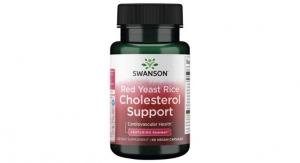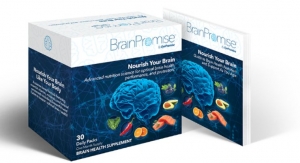Sean Moloughney07.01.09
Perhaps the oldest nutraceuticals category-and arguably the largest in scope-the herbs and botanicals market offers growing appeal to consumers in pursuit of better health; and the industry seems poised to meet demand despite some notable challenges.
Experts believe that many consumers-already overburdened by the economic crisis and fearful of exorbitant healthcare costs-see natural alternatives to mainstream options as rational and worthwhile means of attaining their general health and wellness goals.
"There is currently an increasing global preference for natural ingredients that is affecting all categories of health products and even the food markets," said Joerg Gruenwald, PhD, president, analyze & realize ag, Berlin, Germany.
Brien Quirk, technical director, Draco Natural Products, San Jose, CA, agreed, saying, "With burgeoning healthcare expenditures there will be increasing self reliance by consumers to take charge of their health using preventive and self-care strategies for non-critical conditions. We have already seen this trend emerge with cold and flu remedies, detoxification, sleep and mood support."
Total herb sales in the U.S. market reached $4.8 billion in 2008, a slight increase of about 1% over the previous year, according to Nutrition Business Journal (NBJ), Boulder, CO. Noni ($270 million), mangosteen ($210 million), goji ($170 million), green tea ($140 million) and Echinacea ($120 million) comprised the top five selling herbs/botanicals.
In the food, drug and mass (FDM) market channel, cranberry topped all other herbal dietary supplements for 2008, raking in more than $25 million (demonstrating 5% growth over 2007), according to Information Resources Inc. (IRI), Chicago, IL. Soy ($22 million) garlic ($19 million) saw palmetto ($17 million) and ginkgo ($17 million) rounded out the top five herbal supplements in this channel.
While figures may not be directly comparable since market research firms use different methodologies, SPINS, Schaumburg, IL, notes that for the health and natural foods channel, flaxseed and flaxseed oil take top honors, generating $36 million for 2008, despite a nearly 4% decline in sales from the previous year. Wheat grass and barley grass ($18.5 million), stevia ($17.5 million), aloe vera ($14 million) and milk thistle ($13.5 million) comprised the top five for this channel.
Interestingly, NBJ notes that sales in the FDM channel-accounting for $764 million of the greater $4.8 billion industry-grew 6% from the previous year. Meanwhile, sales in natural and health food stores grew 1.5% and direct sales declined 1%.
On the global stage, the collective herbal market retains an estimated worth of about $85 billion, said Dr. Gruenwald. Breaking that figure down, supplements and functional food/beverages constitute a $23 billion industry, while the herbal pharmaceutical market is worth $45 billion and the cosmetics industry claims about $15 billion, he added.
In terms of geography, the global herbal medicines/supplement market is divided among Germany (28%), Asia (19%), Japan (17%), France (13%), the rest of Europe (12%) and North America (11%).
With so much money on the line, what barriers stand between this market and its full growth potential? And what factors will drive it forward? According to Dr. Gruenwald, "Obstacles for herb and botanical remedies and ingredients are mainly price (synthetic alternatives are often less expensive), and also negative publicity launched by chemical and pharmaceutical companies against competitive herbal substances. Also, for serious indications, synthetic drugs often are more effective. Currently, some herbal products, especially Traditional Chinese Medicine (TCM) products, are under scrutiny because of adulteration with unsafe substances, which may hurt consumer confidence."
Mitch Skop, director of new product development, Pharmachem Laboratories, Kearny, NJ, concurred, saying that the practice of using cheap ingredients that offer no functional benefit continues to chip away at consumer confidence levels. "However, there could be hope if a marketer with a sufficient advertising and public relations budget developed and promoted efficacious supplements using top-shelf ingredients," he noted.
In today's market, high purity extracts offer added appeal, according to Cecelia McCollum, executive vice president, Blue California, Rancho Santa Margarita, CA. "The economy is causing everyone to make more careful decisions and I think our industry is gaining from that. There has always been an interest in natural ingredients. Today consumers are looking for greater quality and better value overall, which means high quality products and competitive pricing." For example, as stevia continues to gain popularity for use in food and beverages, Blue California introduced its Good & Sweet Rebaudioside A 99%.
Investment in clinical studies to determine safety and efficacy will also serve the market well, said Mr. Skop. For example, cranberry extracts have benefited from numerous trials that indicate an ability to prevent recurrence of and relief from common urinary tract infections, even at times compared with prescription antibiotic treatments.
"Attractive ingredients in today's market mean that they are safe; that they offer benefits in a large category; that they have clinical data sufficient to support claims-basically that they can deliver on their promise," he added.
Mark Sysler, business manager and vice president of sales, Bio-Botanica Inc, Hauppauge, NY, agreed that scientific evaluation and innovative concepts would move the market forward. "New research, new constituents and new applications have always driven the growth of herbs and botanical extracts," he said. "Much of what we knew about herbs came from folklore and traditional use dating back centuries. But with new technologies available today, many of the traditional uses have been validated by science. At the same time, the advanced technologies have raised some new questions about safety and use for some herbs, and questioned efficacy. Research continues to drive the growth of the category, and the exploration of new herbs and their uses may bring new products to the market."
Unfortunately, scientific methods of validating botanicals are "lengthy, tortuous and costly," said Vladimir Badmaev, MD, vice president of medical and scientific affairs, Sabinsa Corporation, Piscataway, NJ. "Initial findings on the potential health value of a botanical compound may be negative. On the other hand, a positive finding may easily be contradicted by a subsequent negative outcome of the scientific research. Often a promising botanical compound needs to be championed through tortuous scientific trials, or it will be at risk of being unjustifiably labeled as unsafe and/or ineffective. Still, too few botanical ingredient companies are equipped in know-how to champion an ingredient, and too many companies resort to marketing based on hearsay, borrowed research or in vitro research data as applicable to a specific human condition."
Familiar herbal remedies such as St. John's Wort, garlic, echinacea, ginkgo biloba, black cohosh, ginseng, valerian and devil's claw are still selling well. As with many other nutraceutical segments, all eyes seem focused on antioxidants, especially when derived from exotic fruits. "Antioxidant substances in general provide a multitude of health benefits and are growing strong, bolstered by good science and consumer acceptance," said Dr. Gruenwald. "This includes the so-called 'superfruits,' such as goji, acai, mangosteen and baobab, but also actives such as lycopene, green tea catechins and flavanols."
Sabinsa's Dr. Badmaev said curcuminoids from turmeric also have been recognized as versatile antioxidants and may be used as non-steroidal anti-inflammatory drugs (NSAIDs), inhibiting several factors of inflammation.
"Some of the leading clinical and basic research centers in the U.S., Europe, Israel, Australia and Japan are involved in pre-clinical and clinical research of the anti-cancer mechanisms and applications of curcuminoids in conditions, including multiple myeloma, colon, pancreatic, breast, prostate, head and neck and respiratory tract cancers," he explained. "In addition, first clinical trials with turmeric extract are being conducted in neurodegenerative conditions, (e.g., Alzheimer's disease and Parkinson's disease)."
Spices such as turmeric, ginger and cinnamon have demonstrated significant growth in sales, and this trend is likely to continue, according to Dr. Gruenwald. Sales of turmeric in the health and natural foods channel were more than $11 million in 2008 (13% growth). Meanwhile ginger sales in the FDM channel have risen 42% to nearly $1 million.
Emerging scientific research on flavonoids also continues to support the health benefits of this group of plant compounds, according to Hugo Perez, spokesman for Mars Botanical, Rockville, MD, a scientific division of Mars, Incorporated that is focused on research and product development involving flavanols found in cocoa, tea, wine and certain fruits and vegetables.
"Along with this continued scientific support, flavanols, one type of flavonoid, are becoming a fast-emerging mass market," Mr. Perez said. "According to experts and trend data, flavonoids are a prime marketing opportunity among mainstream health conscious shoppers."
Harnessing the health promoting properties of flavanols derived from cocoa, Mars Botanical recently launched its CirkuHealth dietary supplement. "Our natural, active cocoa extract helps maintain good circulation," Mr. Perez stated. "Healthy circulation gives your body the oxygen and nutrients where it needs them, when it needs them, so that you feel your best."
Recognizing the continued success of green tea, and the value of high purity ingredients, Blue California recently introduced Natural Caffeine 99% derived from green tea, as well as an extract standardized to 95% EGCG (epigallocatechin gallate). The company is also prepared to submit a dossier to FDA regarding the GRAS (Generally Recognized as Safe) status of an ingredient based on L-theanine, an amino acid found in green tea.
Dr. Gruenwald noted that exotic and ethnic ingredients are also very attractive right now. "This is especially true for the functional food segment," he said. "Newly discovered plants with an interesting traditional story would therefore be an easy sell. Superfruits are also in this category, and so are herbals used in ethnic healing traditions such as TCM or Ayurveda."
With growing demand for organic and natural products, Jeff Wuagneux, president and CEO, RFI Ingredients, Blauvelt, NY, admitted that TCM Herbs can be difficult to procure. "This is one of the last agriculturally-based product segments in the dietary supplement industry, which will still see growth as organic products are being developed," he said.
In tough economic times, Draco's Mr. Quirk predicted a greater push toward sustainability. "There will be a greater public demand for products that use less energy for their manufacturing and transport. Crop conservation methods that use less fossil fuel fertilizers, and no-till cultivation methods will be the greater norm."
Under its Sourcestainable product line, RFI is currently developing certified organic TCM herbs standardized using HPLC (high performance liquid chromatography) methods. The company has also introduced AC-11, a patented extract derived from the traditional South American herb Uncaria tomentosa (Cat's Claw). "AC-11 has been clinically proven to reduce both oxidative damage and non-oxidative damage to DNA caused by stress, viruses or bacteria," said Mr. Wuagneux. "In animal studies in which rats were exposed to known DNA-damaging sources (radiation and cytotoxic chemicals), significant repair to both single-stranded and double-stranded DNA breaks was observed. Human clinical studies assessing markers of DNA damage also reported significant reductions in patients receiving 350 mg AC-11 per day compared to controls." AC-11 has also been shown to reduce inflammation and improve immune function, he added.
Combination formulas that contain multiple herbs targeting specific health conditions are gaining momentum, according to Draco's Mr. Quirk. "Increasingly, it is realized that herbs work better synergistically and they also offer proprietary advantages," he said. "For example, to create a proprietary formula, herbs that are less well known or new to the market are being added to more traditionally well known herbs. Echinacea is being used with Maitake mushroom or Andrographis; ginkgo is used with lemon balm and bacopa or ginseng for cognitive support."
As alluring as this concept may be, Mr. Quirk said it still poses some obstacles. "One of the problems with this approach and the growth of this segment is the expectation that the substantiation of efficacy can be based on the sum total of the effects of each separate herb. The actual effect of the combination may affect the physiological effects of the individual components and alter that result," he explained. "Clinical studies on the combined herb formula, with or without bioactive or in vitro studies, provide a much stronger level of evidence than using the borrowed science that exists for each separate botanical. One big step to overcoming this is to use well-established traditional herbal formulas that are based on precise recipes and clinical practice outcomes handed down from hundreds of years of use. Very often these have clinical studies to back their use."
Herbs and botanicals may also contribute to a growing market for beauty and longevity products, according to RFI's Mr. Wuagneux. "Baby Boomers remain the moneymaking demographic for anti-aging products," he noted. "According to a recent report from the Natural Marketing Institute (NMI), 75% of Baby Boomers believe the best years are ahead of them. In this vein, they are looking for solutions that cater to concerns like lack of energy, physical health, memory and emotional health. NMI, through its Healthy Aging/Boomer Database, claims Baby Boomers see supplements as a primary way to promote healthy aging (78%) compared to taking prescription medications (38%)."
Boomers also represent a progressive group in terms of connecting good health with appearance, he added. "NMI claims a whopping 90% of Boomers 'agree that the food and supplements they consume have an effect on their appearance.' As a result, NMI believes Boomers represent the prime target for 'beauty from within' messages."
As a potent antioxidant, resveratrol has gained enormous respect and recognition, particularly within the anti-aging segment, according to Blue California's Ms. McCollum. The company is currently developing a high purity (90% resveratrol) product derived from grape skin. "Having a purified form is going to be great news for the industry," she said.
According to Sabinsa's Dr. Badmaev, other botanicals used in cosmeceuticals include grape seed, bilberry, acerola, baobab, turmeric, ginkgo biloba, white and green tea, red clover, soy, tomato, comfrey, papaya, rosemary, wheat, evening primrose oil, sweet potatoes, carrots, olives, flax, aloe vera, coffee plant, Centella asiatica, avocado and passion fruit.
"Aging brings dramatic and negative changes in our lives and a group of rejuvenating herbs and minerals named in Sanskrit Rasayanas or vitalizers were purposefully used in Indo-Tibetan medicine to address aging as a medical condition," Dr. Badmaev said. "The concept of a vitalizer is similar to, and probably inspired, the contemporary idea of an adaptogen. Withania somnifera, known in Sanskrit as ashwagandha, is an example of a well-studied adaptogen. This plant has long been used in Ayurveda as a rejuvenative especially useful in conditions characterized by mental exhaustion, anxiety, mental depression and chronic disease, (e.g., rheumatoid arthritis, osteoarthritis and diabetes).
Looking ahead, Mr. Wuagneux said that alongside significant interest in the functional food and beverage category, liquid herbal and botanical extracts are making a comeback in the form of tinctures. "Some advantages of tinctures over capsules include faster absorption, longer shelf-life and smaller dosages compared to powdered herbs."
Additionally, Dr. Gruenwald noted that newly discovered phytoalexins, which are substances that are produced by "stressed" plants, could offer significant market potential. "Phytoalexins, which lend themselves very well as functional food ingredients, have so far been largely ignored, yet it looks as if they may possess antioxidant and anti-inflammatory, maybe even anticancer activity."
Experts believe that many consumers-already overburdened by the economic crisis and fearful of exorbitant healthcare costs-see natural alternatives to mainstream options as rational and worthwhile means of attaining their general health and wellness goals.
"There is currently an increasing global preference for natural ingredients that is affecting all categories of health products and even the food markets," said Joerg Gruenwald, PhD, president, analyze & realize ag, Berlin, Germany.
Brien Quirk, technical director, Draco Natural Products, San Jose, CA, agreed, saying, "With burgeoning healthcare expenditures there will be increasing self reliance by consumers to take charge of their health using preventive and self-care strategies for non-critical conditions. We have already seen this trend emerge with cold and flu remedies, detoxification, sleep and mood support."
Market Watch
Total herb sales in the U.S. market reached $4.8 billion in 2008, a slight increase of about 1% over the previous year, according to Nutrition Business Journal (NBJ), Boulder, CO. Noni ($270 million), mangosteen ($210 million), goji ($170 million), green tea ($140 million) and Echinacea ($120 million) comprised the top five selling herbs/botanicals.
In the food, drug and mass (FDM) market channel, cranberry topped all other herbal dietary supplements for 2008, raking in more than $25 million (demonstrating 5% growth over 2007), according to Information Resources Inc. (IRI), Chicago, IL. Soy ($22 million) garlic ($19 million) saw palmetto ($17 million) and ginkgo ($17 million) rounded out the top five herbal supplements in this channel.
While figures may not be directly comparable since market research firms use different methodologies, SPINS, Schaumburg, IL, notes that for the health and natural foods channel, flaxseed and flaxseed oil take top honors, generating $36 million for 2008, despite a nearly 4% decline in sales from the previous year. Wheat grass and barley grass ($18.5 million), stevia ($17.5 million), aloe vera ($14 million) and milk thistle ($13.5 million) comprised the top five for this channel.
Interestingly, NBJ notes that sales in the FDM channel-accounting for $764 million of the greater $4.8 billion industry-grew 6% from the previous year. Meanwhile, sales in natural and health food stores grew 1.5% and direct sales declined 1%.
On the global stage, the collective herbal market retains an estimated worth of about $85 billion, said Dr. Gruenwald. Breaking that figure down, supplements and functional food/beverages constitute a $23 billion industry, while the herbal pharmaceutical market is worth $45 billion and the cosmetics industry claims about $15 billion, he added.
In terms of geography, the global herbal medicines/supplement market is divided among Germany (28%), Asia (19%), Japan (17%), France (13%), the rest of Europe (12%) and North America (11%).
Breaking Barriers
With so much money on the line, what barriers stand between this market and its full growth potential? And what factors will drive it forward? According to Dr. Gruenwald, "Obstacles for herb and botanical remedies and ingredients are mainly price (synthetic alternatives are often less expensive), and also negative publicity launched by chemical and pharmaceutical companies against competitive herbal substances. Also, for serious indications, synthetic drugs often are more effective. Currently, some herbal products, especially Traditional Chinese Medicine (TCM) products, are under scrutiny because of adulteration with unsafe substances, which may hurt consumer confidence."
Mitch Skop, director of new product development, Pharmachem Laboratories, Kearny, NJ, concurred, saying that the practice of using cheap ingredients that offer no functional benefit continues to chip away at consumer confidence levels. "However, there could be hope if a marketer with a sufficient advertising and public relations budget developed and promoted efficacious supplements using top-shelf ingredients," he noted.
In today's market, high purity extracts offer added appeal, according to Cecelia McCollum, executive vice president, Blue California, Rancho Santa Margarita, CA. "The economy is causing everyone to make more careful decisions and I think our industry is gaining from that. There has always been an interest in natural ingredients. Today consumers are looking for greater quality and better value overall, which means high quality products and competitive pricing." For example, as stevia continues to gain popularity for use in food and beverages, Blue California introduced its Good & Sweet Rebaudioside A 99%.
Investment in clinical studies to determine safety and efficacy will also serve the market well, said Mr. Skop. For example, cranberry extracts have benefited from numerous trials that indicate an ability to prevent recurrence of and relief from common urinary tract infections, even at times compared with prescription antibiotic treatments.
"Attractive ingredients in today's market mean that they are safe; that they offer benefits in a large category; that they have clinical data sufficient to support claims-basically that they can deliver on their promise," he added.
Mark Sysler, business manager and vice president of sales, Bio-Botanica Inc, Hauppauge, NY, agreed that scientific evaluation and innovative concepts would move the market forward. "New research, new constituents and new applications have always driven the growth of herbs and botanical extracts," he said. "Much of what we knew about herbs came from folklore and traditional use dating back centuries. But with new technologies available today, many of the traditional uses have been validated by science. At the same time, the advanced technologies have raised some new questions about safety and use for some herbs, and questioned efficacy. Research continues to drive the growth of the category, and the exploration of new herbs and their uses may bring new products to the market."
Unfortunately, scientific methods of validating botanicals are "lengthy, tortuous and costly," said Vladimir Badmaev, MD, vice president of medical and scientific affairs, Sabinsa Corporation, Piscataway, NJ. "Initial findings on the potential health value of a botanical compound may be negative. On the other hand, a positive finding may easily be contradicted by a subsequent negative outcome of the scientific research. Often a promising botanical compound needs to be championed through tortuous scientific trials, or it will be at risk of being unjustifiably labeled as unsafe and/or ineffective. Still, too few botanical ingredient companies are equipped in know-how to champion an ingredient, and too many companies resort to marketing based on hearsay, borrowed research or in vitro research data as applicable to a specific human condition."
Standing Out in a Crowd
Familiar herbal remedies such as St. John's Wort, garlic, echinacea, ginkgo biloba, black cohosh, ginseng, valerian and devil's claw are still selling well. As with many other nutraceutical segments, all eyes seem focused on antioxidants, especially when derived from exotic fruits. "Antioxidant substances in general provide a multitude of health benefits and are growing strong, bolstered by good science and consumer acceptance," said Dr. Gruenwald. "This includes the so-called 'superfruits,' such as goji, acai, mangosteen and baobab, but also actives such as lycopene, green tea catechins and flavanols."
Sabinsa's Dr. Badmaev said curcuminoids from turmeric also have been recognized as versatile antioxidants and may be used as non-steroidal anti-inflammatory drugs (NSAIDs), inhibiting several factors of inflammation.
"Some of the leading clinical and basic research centers in the U.S., Europe, Israel, Australia and Japan are involved in pre-clinical and clinical research of the anti-cancer mechanisms and applications of curcuminoids in conditions, including multiple myeloma, colon, pancreatic, breast, prostate, head and neck and respiratory tract cancers," he explained. "In addition, first clinical trials with turmeric extract are being conducted in neurodegenerative conditions, (e.g., Alzheimer's disease and Parkinson's disease)."
Spices such as turmeric, ginger and cinnamon have demonstrated significant growth in sales, and this trend is likely to continue, according to Dr. Gruenwald. Sales of turmeric in the health and natural foods channel were more than $11 million in 2008 (13% growth). Meanwhile ginger sales in the FDM channel have risen 42% to nearly $1 million.
Emerging scientific research on flavonoids also continues to support the health benefits of this group of plant compounds, according to Hugo Perez, spokesman for Mars Botanical, Rockville, MD, a scientific division of Mars, Incorporated that is focused on research and product development involving flavanols found in cocoa, tea, wine and certain fruits and vegetables.
"Along with this continued scientific support, flavanols, one type of flavonoid, are becoming a fast-emerging mass market," Mr. Perez said. "According to experts and trend data, flavonoids are a prime marketing opportunity among mainstream health conscious shoppers."
Harnessing the health promoting properties of flavanols derived from cocoa, Mars Botanical recently launched its CirkuHealth dietary supplement. "Our natural, active cocoa extract helps maintain good circulation," Mr. Perez stated. "Healthy circulation gives your body the oxygen and nutrients where it needs them, when it needs them, so that you feel your best."
Recognizing the continued success of green tea, and the value of high purity ingredients, Blue California recently introduced Natural Caffeine 99% derived from green tea, as well as an extract standardized to 95% EGCG (epigallocatechin gallate). The company is also prepared to submit a dossier to FDA regarding the GRAS (Generally Recognized as Safe) status of an ingredient based on L-theanine, an amino acid found in green tea.
Dr. Gruenwald noted that exotic and ethnic ingredients are also very attractive right now. "This is especially true for the functional food segment," he said. "Newly discovered plants with an interesting traditional story would therefore be an easy sell. Superfruits are also in this category, and so are herbals used in ethnic healing traditions such as TCM or Ayurveda."
With growing demand for organic and natural products, Jeff Wuagneux, president and CEO, RFI Ingredients, Blauvelt, NY, admitted that TCM Herbs can be difficult to procure. "This is one of the last agriculturally-based product segments in the dietary supplement industry, which will still see growth as organic products are being developed," he said.
In tough economic times, Draco's Mr. Quirk predicted a greater push toward sustainability. "There will be a greater public demand for products that use less energy for their manufacturing and transport. Crop conservation methods that use less fossil fuel fertilizers, and no-till cultivation methods will be the greater norm."
Under its Sourcestainable product line, RFI is currently developing certified organic TCM herbs standardized using HPLC (high performance liquid chromatography) methods. The company has also introduced AC-11, a patented extract derived from the traditional South American herb Uncaria tomentosa (Cat's Claw). "AC-11 has been clinically proven to reduce both oxidative damage and non-oxidative damage to DNA caused by stress, viruses or bacteria," said Mr. Wuagneux. "In animal studies in which rats were exposed to known DNA-damaging sources (radiation and cytotoxic chemicals), significant repair to both single-stranded and double-stranded DNA breaks was observed. Human clinical studies assessing markers of DNA damage also reported significant reductions in patients receiving 350 mg AC-11 per day compared to controls." AC-11 has also been shown to reduce inflammation and improve immune function, he added.
Trend Spotting
Combination formulas that contain multiple herbs targeting specific health conditions are gaining momentum, according to Draco's Mr. Quirk. "Increasingly, it is realized that herbs work better synergistically and they also offer proprietary advantages," he said. "For example, to create a proprietary formula, herbs that are less well known or new to the market are being added to more traditionally well known herbs. Echinacea is being used with Maitake mushroom or Andrographis; ginkgo is used with lemon balm and bacopa or ginseng for cognitive support."
As alluring as this concept may be, Mr. Quirk said it still poses some obstacles. "One of the problems with this approach and the growth of this segment is the expectation that the substantiation of efficacy can be based on the sum total of the effects of each separate herb. The actual effect of the combination may affect the physiological effects of the individual components and alter that result," he explained. "Clinical studies on the combined herb formula, with or without bioactive or in vitro studies, provide a much stronger level of evidence than using the borrowed science that exists for each separate botanical. One big step to overcoming this is to use well-established traditional herbal formulas that are based on precise recipes and clinical practice outcomes handed down from hundreds of years of use. Very often these have clinical studies to back their use."
Herbs and botanicals may also contribute to a growing market for beauty and longevity products, according to RFI's Mr. Wuagneux. "Baby Boomers remain the moneymaking demographic for anti-aging products," he noted. "According to a recent report from the Natural Marketing Institute (NMI), 75% of Baby Boomers believe the best years are ahead of them. In this vein, they are looking for solutions that cater to concerns like lack of energy, physical health, memory and emotional health. NMI, through its Healthy Aging/Boomer Database, claims Baby Boomers see supplements as a primary way to promote healthy aging (78%) compared to taking prescription medications (38%)."
Boomers also represent a progressive group in terms of connecting good health with appearance, he added. "NMI claims a whopping 90% of Boomers 'agree that the food and supplements they consume have an effect on their appearance.' As a result, NMI believes Boomers represent the prime target for 'beauty from within' messages."
As a potent antioxidant, resveratrol has gained enormous respect and recognition, particularly within the anti-aging segment, according to Blue California's Ms. McCollum. The company is currently developing a high purity (90% resveratrol) product derived from grape skin. "Having a purified form is going to be great news for the industry," she said.
According to Sabinsa's Dr. Badmaev, other botanicals used in cosmeceuticals include grape seed, bilberry, acerola, baobab, turmeric, ginkgo biloba, white and green tea, red clover, soy, tomato, comfrey, papaya, rosemary, wheat, evening primrose oil, sweet potatoes, carrots, olives, flax, aloe vera, coffee plant, Centella asiatica, avocado and passion fruit.
"Aging brings dramatic and negative changes in our lives and a group of rejuvenating herbs and minerals named in Sanskrit Rasayanas or vitalizers were purposefully used in Indo-Tibetan medicine to address aging as a medical condition," Dr. Badmaev said. "The concept of a vitalizer is similar to, and probably inspired, the contemporary idea of an adaptogen. Withania somnifera, known in Sanskrit as ashwagandha, is an example of a well-studied adaptogen. This plant has long been used in Ayurveda as a rejuvenative especially useful in conditions characterized by mental exhaustion, anxiety, mental depression and chronic disease, (e.g., rheumatoid arthritis, osteoarthritis and diabetes).
Looking ahead, Mr. Wuagneux said that alongside significant interest in the functional food and beverage category, liquid herbal and botanical extracts are making a comeback in the form of tinctures. "Some advantages of tinctures over capsules include faster absorption, longer shelf-life and smaller dosages compared to powdered herbs."
Additionally, Dr. Gruenwald noted that newly discovered phytoalexins, which are substances that are produced by "stressed" plants, could offer significant market potential. "Phytoalexins, which lend themselves very well as functional food ingredients, have so far been largely ignored, yet it looks as if they may possess antioxidant and anti-inflammatory, maybe even anticancer activity."
| European Claims Process Could Threaten Future of Herbs & Botanicals Various botanical products could be in jeopardy due to the European Food Safety Authority's (EFSA) methods for assessing nutrition and health claims, according to the European Botanical Forum (EBF). As EFSA prepared to release its first evaluation of article 13 claims at the end of July, the EBF and two other European trade associations-the European Federation of Associations of Health Product Manufacturers (EHPM) and the European Responsible Nutrition Alliance (ERNA)-called on the European Commission (EC) to reassess its processes. Botanical food supplements rely on information on the intended use and health effects, which are covered by the EU claims legislation. The EBF, which represents the main botanical ingredients and food supplements manufacturers in the EU, expressed fear that if EFSA refuses to accept criteria that are sufficient for pharmaceutical herbal products (i.e., based on traditional knowledge) it could lead to the eradication of products. EFSA recently sent back to the Commission more than half of the approximately 4000 claims received for further clarification, including many botanical claims, which according to the EBF "shows that something is fundamentally wrong with the process." "Despite the fact that the claims regulation calls for a different type of assessment between article 13 claims and applications for authorization under article 14, the European Commission and EFSA have so far given no indication as to how such assessment will be done differently," said Manfred Ruthsatz, chairman of the EBF. "On the contrary, many believe that the same 'gold standard' approach taken for disease risk reduction claims will be applied to evaluate functional health claims. Beyond a breach with the meaning of the text, we consider the sole reliance on clinical trials as disproportionate. The regulation particularly foresees using the totality of supportive evidence and this includes respecting traditional usage." The three federations represent more than 2500 food supplement manufacturers, of which 80% are small and medium-sized companies. "We fear that the current process will lead to dismissal of a majority of the article 13 entries, not because of insufficient substantiation but because of a lack of clarity on an important number of issues that should first be addressed," said Gert Krabichler, chairman of ERNA. "Therefore we believe that the EC should take the time to carefully clarify all issues in a formal dialogue with stakeholders." Peter van Doorn, chairman of EHPM, agreed, saying: "The nutrition and health claims regulation is of crucial importance for our member companies as food supplement products need to indicate their effect and intended use in order to allow consumers to make an informed choice. These indications are considered as health claims and the vast majority are based on generally accepted scientific evidence, covered by the article 13 claims list. Many of these have been on the market for decades. We have entered a crucial phase now with the publication of the first EFSA opinions on these claims expected by the end of July, and we are extremely concerned that the process followed is not working." -S.M. |



























